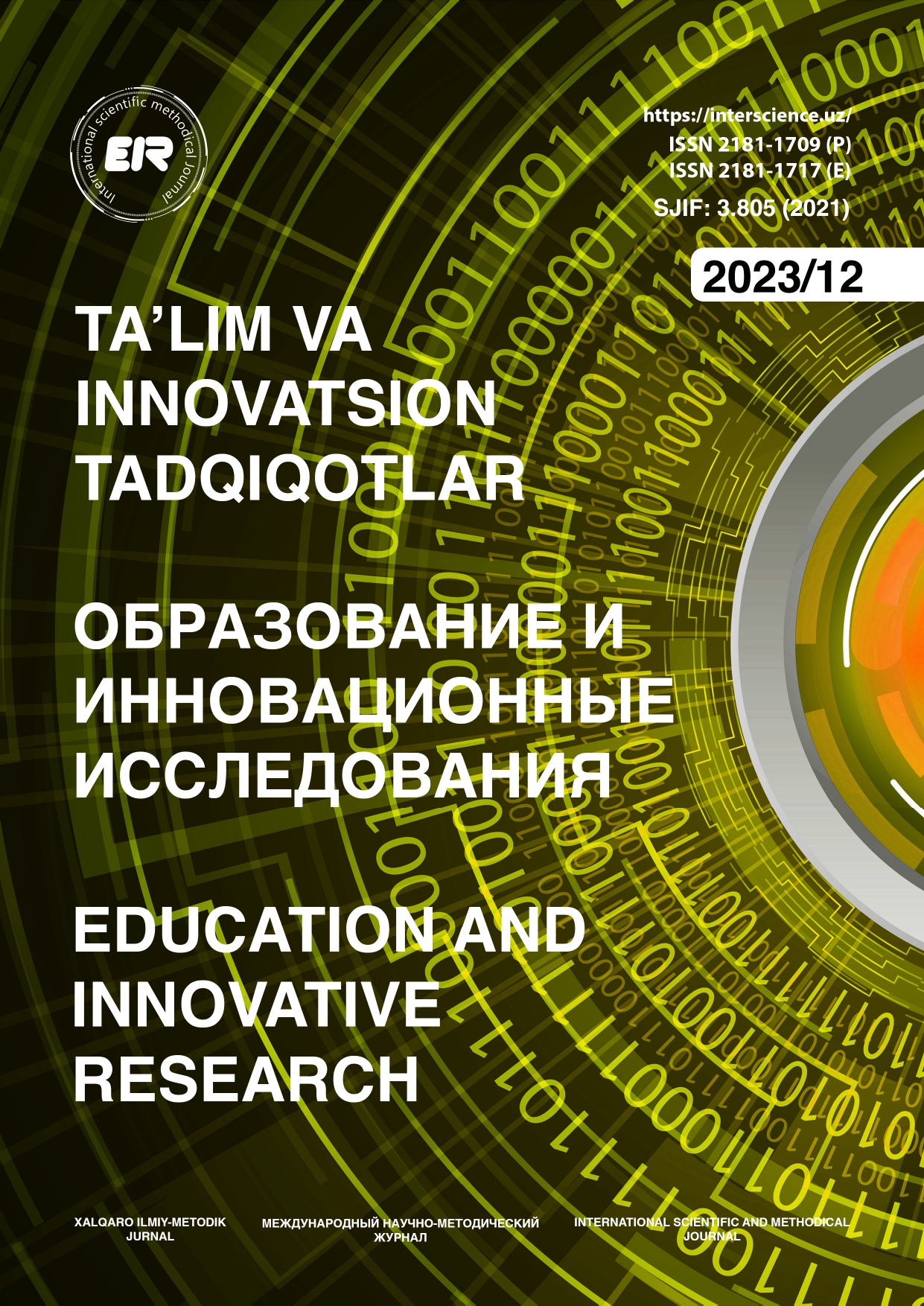ADVANCED RENDERING TECHNIQUES FOR EDUCATIONAL SIMULATORS IN FUNDAMENTALS OF POWER SUPPLY.
Rakhmanov Ikromjon Usmanovich, Tashkent State Technical University «Electrical supply» department head, doctor of technical sciences (DSc), professor Qurbonova Rayhona Shahobiddin qizi, Toshkent davlat texnika universiteti mustaqil tadqiqotchisi Uzaqov Navruz Choriyor oʻgʻli, Toshkent davlat texnika universiteti tayanch doktoranti Nematov Laziz Alisherovich, Buxoro muhandislik - texnologiya instituti “Energetika” kafedrasi dotsenti, pedagogika fanlari falsafa doktori (PhD), Pedagogika fanlari doktori
Keywords:
advanced rendering techniques, electrical supply fundamentals, engineering education, immersive learning environments, photorealistic simulations, student engagement, conceptual understanding, mixed-methods approach, performance metrics, visual learning, interactive tools, technological integration, educational accessibility, curriculum development, graphical user interface, 3D modeling, dynamic lighting, real-time rendering, data visualization, educational theory, learning styles, technical support, educational scalability, innovative technologies, digital learning landscape.Abstract
This study examines the impact of advanced rendering techniques in educational simulators on learning electrical supply fundamentals in engineering education. Traditional teaching methods often struggle with complex concepts, leading to the investigation of high-fidelity visual simulations to enhance understanding and retention among engineering students. A multifaceted approach was adopted, incorporating various rendering techniques into simulators integrated into an electrical engineering curriculum. The effectiveness of these simulators was assessed through quantitative and qualitative methods, showing significant improvements in student engagement, conceptual understanding, and information retention. The realism offered by these simulators made abstract concepts more tangible and comprehensible, complementing traditional teaching methods. Quantitative data indicated notable improvements in student performance metrics. The study underscores the potential of advanced visualization technologies in education, particularly for complex subjects like electrical engineering, and discusses the challenges of technology integration and accessibility. It concludes that advanced rendering in educational simulators is a valuable, engaging, and effective addition to modern educational strategies, aligning with the evolving digital education landscape.
References
Anderson, J. H., & Liu, Y. (2023). Advanced Visualization in Engineering Education. Journal of Educational Technology in Engineering, 12(4), 215-230.
Bennett, L., & O’Neil, T. (2022). The Role of Interactive Simulators in Electrical Engineering. International Journal of Engineering Education, 38(2), 142-157.
Carter, S., & Kumar, A. (2021). Photorealistic Rendering in Educational Software: A New Paradigm. Journal of Computer-Assisted Learning, 37(3), 708-722.
Davis, R., & Thompson, G. (2023). Enhancing Student Engagement through Technology. Educational Research Review, 19(1), 45-61.
Evans, P. L., & Nguyen, H. (2022). The Impact of Real-Time Rendering on Learning Outcomes. Journal of Educational Technology & Society, 25(1), 112-127.
Foster, A., & Zhao, Y. (2023). The Evolution of Educational Simulators in Electrical Engineering. Technology in Education Journal, 11(2), 200-216.
Gupta, M., & Clarkson, J. (2021). Interactive Learning Environments: A Review. Journal of Interactive Learning Research, 32(4), 467-484.
Harris, D., & Patel, S. (2022). Theoretical and Practical Approaches in Electrical Engineering Education. Advances in Engineering Education, 6(1), 34-50.





